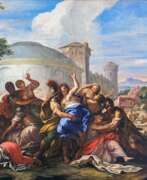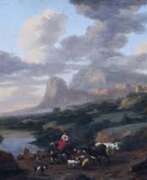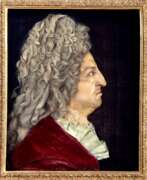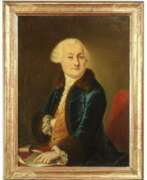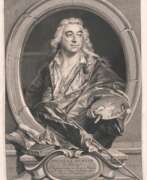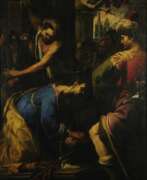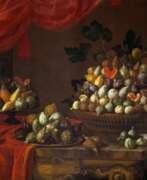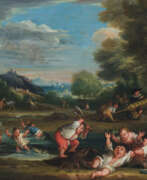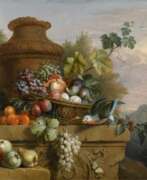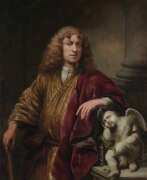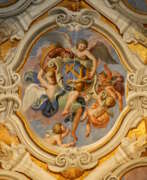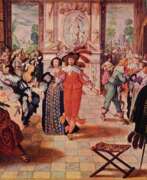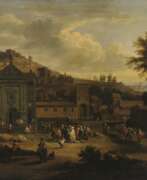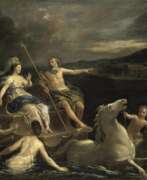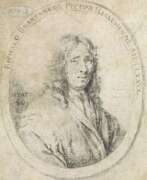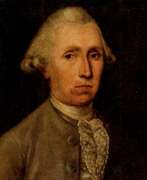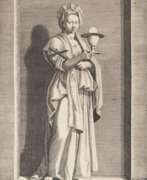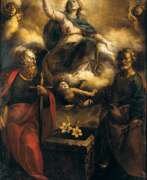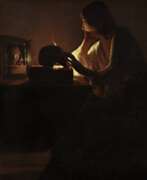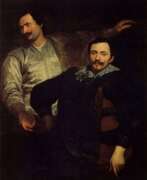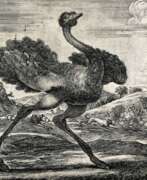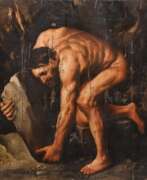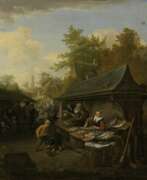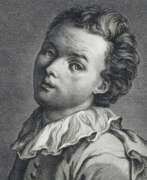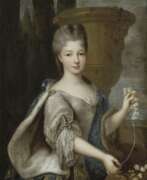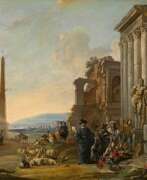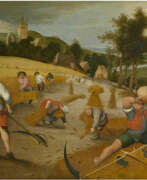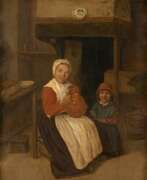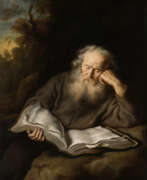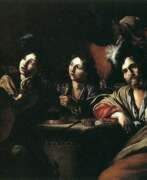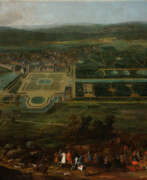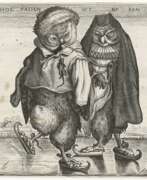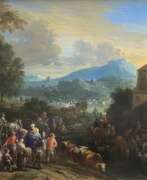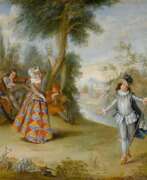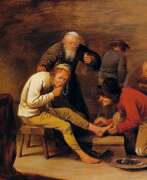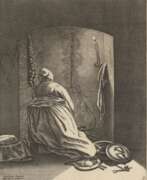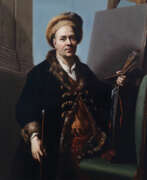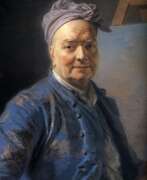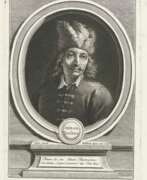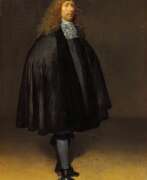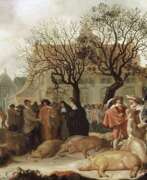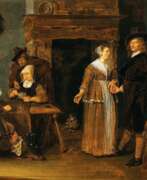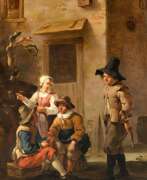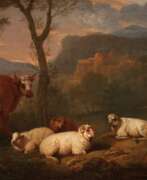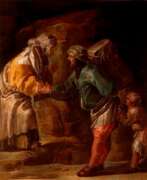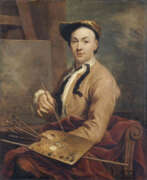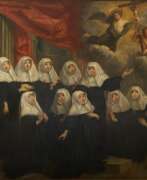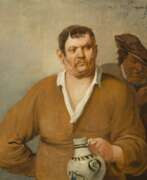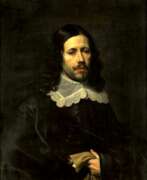Genre painters 17th century
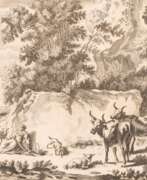

Elias Baeck called "Heldenmuth", was a German painter and engraver from Augsburg. Baeck worked for some time in Rome, then in Laybach, but finally returned to Augsburg, where he died in 1747. His chief works — both in painting and engraving — were portraits and landscapes. His engravings are sometimes signed "E.B.a.H.", standing for "Elias Baeck, alias Heldenmuth".


Andrea Bianchi, known as “Vespino”, was a professional painter who worked in Milan. He was the favourite artist of Cardinal Federico Borromeo, who commissioned him to make a number of copies of great Renaissance masterpieces, and of works by Leonardo da Vinci in particular.
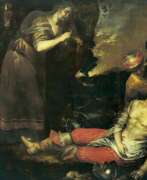

Luciano Borzone was an Italian painter of the late Mannerist and early Baroque periods, working mainly in Genoa. After an apprenticeship with Filippo Bertolotto, his uncle, Duke Alberigo of Massa Lunigiana, patronised his work as a pupil of Cesare Corte.
Luciano Bordzone was an outstanding portrait painter. In Genoa he painted the Purification for the church of San Domenico and the Baptism of Christ for the church of Santo Spirito.
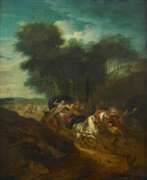

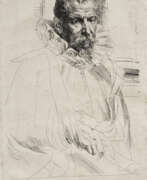

Pieter Brueghel the Younger was a Flemish artist celebrated for his detailed landscapes, religious themes, proverbs, and vibrant village scenes. Despite being the son of the illustrious Pieter Bruegel the Elder, Brueghel the Younger carved out his own niche in the art world, earning the moniker 'Hell Brueghel' for his dynamic scenes of fires and energetic copies of his father's peasant life portrayals.
Brueghel the Younger's original creations, such as "The Village Lawyer," showcase his keen observation of village life, merging the energy and boldness of 17th-century style with his father's idiom. His work is characterized by its lively, picturesque depiction of peasants, albeit some critics argue they lack the subtlety and humanism of his father's creations. Despite this, Brueghel the Younger's legacy includes a significant number of original works and copies that were rediscovered in the 20th century, highlighting his contribution to the Flemish painting tradition.
His workshop was known for its prolific output, especially in producing copies of Bruegel the Elder's compositions, a testament to the enduring popularity and influence of the Bruegel family's artistic legacy. However, Brueghel the Younger also impressed with his unique compositions, contributing to the genre of still life and village scenes with a distinct style that resonated well into modern times.
For collectors and experts in art and antiques, Pieter Brueghel the Younger's works represent an important period in Flemish art, offering insights into the evolution of genre painting and the detailed portrayal of rural life. His paintings, held in esteemed collections worldwide, continue to be studied and admired for their vibrancy, narrative quality, and historical value.
To explore more about Pieter Brueghel the Younger and to stay updated on sales and auction events related to his work, signing up for specialized updates can offer exclusive insights into the world of this influential Flemish painter. This subscription ensures enthusiasts and collectors are well-informed about developments related to Brueghel the Younger's oeuvre, enhancing their appreciation and understanding of his artistic legacy.
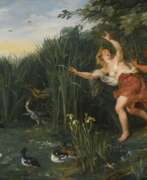

Jan Bruegel the Younger was a Flemish Baroque painter. He was the son of Jan Brueghel the Elder, and grandson of Pieter Bruegel the Elder, both prominent painters who contributed respectively to the development of Renaissance and Baroque painting in the Habsburg Netherlands. Taking over his father's workshop at an early age, he painted the same subjects as his father in a style which was similar to that of his father. He regularly collaborated with leading Flemish painters of his time.


Giovanni Antonio Burrini was an Italian painter and engraver who worked during the Late Baroque period.
Giovanni Antonio Burrini worked mainly as a painter, specialising in religious and historical subjects. His style was influenced by the Bolognese school of painting, which emphasized classical composition, clear forms, and vivid colours.
Burrini's paintings often depicted scenes from biblical narratives and mythological stories. His work was distinguished by his meticulous attention to detail, delicate brushwork and sense of dramatic illumination and atmosphere. He also created intricate and finely detailed engravings.
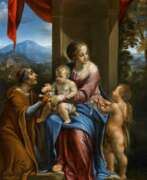

Angelo Caroselli was an Italian painter, born and active during the Baroque period, primarily in Rome. Known for his eclectic style, Caroselli's work was significantly influenced by Caravaggio, evident in the naturalism and chiaroscuro that marked his compositions. His subject matter often included colorful characters from contemporary Rome, scenes of witchcraft, musicians, and genre scenes reflective of the Caravaggisti, a group of artists who followed Caravaggio's stylistic approach. Caroselli's ability to blend allegories, religious works, and portraits with genre scenes showcased his search for originality and a unique narrative voice within the Baroque movement.
Angelo Caroselli's career was marked by his versatility as not only a painter but also an art restorer, copyist, and possibly a forger. This breadth of skills contributed to the diverse body of work he left behind, which ranged from scenes of everyday life to complex allegorical compositions. His works often depicted the lower echelons of society, including musicians, card players, and prostitutes, infused with a potent naturalism that brought these figures to life against the backdrop of 17th-century Rome.
Despite his adherence to Caravaggesque forms and themes, Angelo Caroselli's work also displayed 'archaicising' elements, which some art historians view as a conscious departure from the dominant Baroque style of his time. This aspect of his work, along with his skill in copying the works of ancient masters, highlights a deliberate exploration of and departure from the prevailing artistic norms, contributing to the unique place he occupies in Baroque art history.
Notably, Caroselli's influence extended beyond Italy, affecting the work of other Caravaggisti, including the Lucchese painter Pietro Paolini and the Dutch painter Dirck van Baburen. This cross-cultural impact underscores the broader significance of Caroselli's work within the Baroque period and its enduring influence on subsequent generations of artists.
His legacy includes several known works that are housed in prestigious institutions and collections worldwide, exemplifying the enduring appeal and historical importance of his artistic contributions. Among these, "The Plague at Ashdod (after Poussin)" stands out as a significant piece, reflecting his capability to engage with and reinterpret the works of his contemporaries and predecessors.
For collectors and experts in art and antiques, Caroselli's oeuvre offers a fascinating glimpse into the Baroque period's complexity, characterized by a blend of innovation, tradition, and a deep engagement with the human condition. His work remains a testament to the vibrancy and dynamism of 17th-century Italian art, inviting ongoing exploration and appreciation.
To stay updated on new discoveries, sales, and auction events related to Angelo Caroselli, sign up for our newsletter. This subscription ensures you're the first to know about the latest findings and opportunities to acquire works by or related to Angelo Caroselli, catering specifically to enthusiasts and collectors of historical art and antiques.
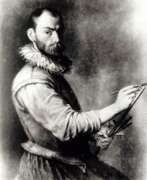

Annibale Carracci was an Italian painter and instructor, renowned for his influence in the transition from Mannerism to the Baroque style. Born into a humble family in Bologna, Annibale, alongside his brother Agostino and cousin Ludovico, founded the Accademia degli Incamminati, promoting a new artistic approach that combined a thorough study of nature with the study of previous art masters. This approach aimed to form a universal style, distinguishing their work from the mannered art of their contemporaries.
Annibale's work in Rome, especially his frescoes in the Palazzo Farnese, showcased his mastery of illusionistic elements, drawing inspiration from classical antiquity and the works of Michelangelo Buonarroti and Raphael. His work on the Galleria Farnese ceiling is particularly noted for its integration of classical ideals with dynamic Baroque energy, making it a seminal work in the evolution of Baroque art. His style influenced a myriad of artists, including Peter Paul Rubens, Nicolas Poussin, and Gian Lorenzo Bernini, and his approach to painting, emphasizing a blend of idealism with observational naturalism, set a new standard for European art.
Annibale Carracci's legacy extends beyond his frescoes; his genre paintings and landscapes were pivotal in elevating these forms to new prominence. His innovative techniques and thematic versatility have ensured his esteemed place in art history, influencing the trajectory of 17th-century European art.
For art collectors and experts, Annibale Carracci's works represent a pivotal moment in the evolution of European painting, showcasing a transition from the detailed naturalism of the Renaissance to the expressive dynamism of the Baroque. His influence is evident in the works of subsequent generations of artists, marking him as a figure of immense historical and artistic significance.
To stay updated on new product sales and auction events related to Annibale Carracci, consider signing up for our updates. This subscription will provide you with curated information pertinent to the legacy and art of Carracci, ensuring you remain informed about opportunities to engage with his enduring artistic influence.
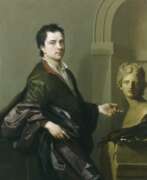

Michael Dahl was a Swedish portrait painter.
After several years of traveling in France and Italy, he finally settled in London in 1689, where he worked in the studio of Sir Godfrey Kneller. Dahl painted portraits of many aristocrats and some members of royal families. Michael Dahl soon became his teacher's chief rival and gained the patronage of Prince George of Denmark and his wife Princess Anne, whose portraits he also created. His studio practice flourished and he was the most popular portrait painter in London at the time.
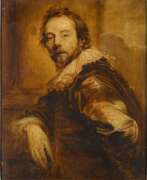

Adam de Coster, born around 1586 in Mechelen and passing away in 1643 in Antwerp, was a renowned Flemish painter and a key figure among the Antwerp Caravaggisti. This group of artists was part of an international movement that interpreted Caravaggio's work in a personal manner, known for their genre scenes with strong chiaroscuro effects. De Coster was particularly celebrated for his nocturnal scenes, earning him the nickname "Pictor Noctium" (literal translation „Painter of Nights“) due to his preference for tenebrist scenes.
His works often depicted subjects similar to those found in Caravaggio's paintings, such as card sharps, fortune tellers, and musical performances, showcasing de Coster's fascination with the play of light and shadow. Notable pieces by de Coster include "Three Singers," which demonstrates his skill in rendering the texture of fabrics and the dramatic effects of light on his subjects, and "A Man Singing by Candlelight," capturing a moment's drama through meticulous lighting.
Adam de Coster's art continues to captivate audiences with its atmospheric intensity and meticulous attention to detail. His contributions have solidified his place in the history of Flemish painting, with works featured in prestigious collections, including the Liechtenstein Museum in Vienna and the National Gallery of Ireland.
For collectors and experts in art and antiques, Adam de Coster's masterpieces represent a fascinating intersection of Flemish tradition and Caravaggesque innovation. To stay informed about new discoveries, sales, and auction events related to Adam de Coster, consider signing up for updates from art galleries and auction houses. This will ensure you have access to the latest information and opportunities to appreciate the legacy of this luminous master of painting.


Aert de Gelder was a Dutch painter. He was the only Dutch artist to paint in the tradition of Rembrandt's late style into the 18th century.
As author of biblical scenes and portraits his style was inspired by Rembrandt's, using his artistic ideas, well into the 18th century, without being influenced by contemporary new fashions. From the artistic point of view his work can not be considered as passive imitation of the master; indeed, it stands for inventiveness in the narrative, taste for the theatrical and a strong emotional charge of the characters. All these traits made him one of the most important interpreters of Dutch painting of the late seventeenth century.
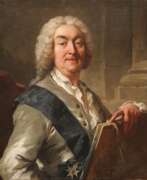

Jean-François de Troy was a French Rococo easel and fresco painter, draughtsman and tapestry designer. One of France's leading history painters in his time, he was equally successful with his decorative paintings, genre scenes and portraits. He was the inventor of the tableaux de modes ('paintings of fashions'), which attempted to provide a spirited portrayal of contemporary fashions, pastimes and manners.
He was the Director of the French Academy in Rome from 1738.


Lucas de Valdés Carasquilla, a Spanish Baroque painter and engraver from Seville, born in 1661, was the third child of Juan de Valdés Leal. Influenced by his father's role in the painting guild, he began artistic endeavors early, creating his first known work at eleven. Alongside his siblings, he learned painting and engraving techniques in his father's workshop. Notably, he collaborated on assignments like adorning the Hospital de los Venerables' church. After formal education at San Hermenegildo College, he married the daughter of sculptor Francisco Dionisio de Ribas.
Lucas's prominence grew as his father's health declined. He completed various works, including murals, engravings, portraits, and more, reflecting influences from Murillo and others. His significant projects encompassed the murals in churches like the Hospital de los Venerables and the convent of San Pablo el Real. Around 1715, he painted the dome of the church at San Luis de los Franceses, then shifted to teaching mathematics at the Academy of Guardiamarinas in Cádiz from 1719, marking a decline in artistic output. He passed away in Cádiz on February 23, 1725.
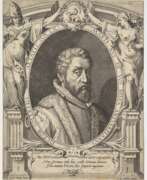

Marten de Vos (or Maarten de Vos, or Maerten de Vos) was a Dutch painter, draughtsman and graphic artist, dean of the Antwerp Guild.
After studying in Rome and Venice, de Vos returned to his native Antwerp in 1558 and became one of the city's leading artists. He created altarpiece images for many of Antwerp's churches. Many of his religious and historical paintings were later engraved, making him known throughout Flanders.
De Vos was also the founder of the Society of Romanists, whose members were famous artists and humanists of the time who appreciated the humanistic culture of Rome.


Abraham Diepraam was a Dutch painter of the Golden Age and a member of the Guild of St. Luke in Dordrecht. He is known for his small genre works depicting interior tavern scenes with drinking or smoking peasants. He also painted portraits of ordinary people.
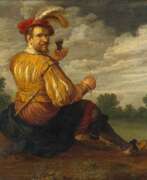

Joost Cornelisz. Droochsloot was a Dutch painter of the Dutch Golden Age, member of the Guild of St. Luke in Utrecht. He was a versatile painter, painting landscapes, moral allegories, and biblical stories. But he was mainly known for his genre rustic scenes with many participants, these paintings often had a moral component. In his compositions, Drochslot paid much attention to detail and signed them with the monogram "JCODS."
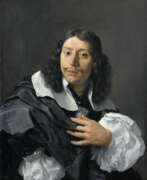

Karel Dujardin was a Dutch painter and printmaker of the Golden Age of Dutch painting.
He studied with Klaas Berchem and Paulus Potter, traveled to Italy, and lived in Lyon. In 1656 he participated in the founding of the Pictura Society in The Hague.
Dujardin painted mostly Italian landscapes, genre scenes, including scenes from rural life, portraits of elegant people and historical paintings.
Many of Dujardin's works are in the Louvre, the Hermitage (St. Petersburg), as well as in Amsterdam, The Hague, Kassel, and Berlin.
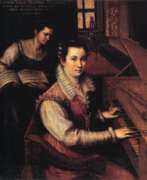

Lavinia Fontana was a Bolognese Mannerist painter active in Bologna and Rome. She is best known for her successful portraiture, but also worked in the genres of mythology and religious painting. She was trained by her father Prospero Fontana who was a teacher at the School of Bologna. She is regarded as the first female career artist in Western Europe as she relied on commissions for her income. Her family relied on her career as a painter, and her husband served as her agent and raised their 11 children. She was perhaps the first woman artist to paint female nudes, but this is a topic of controversy among art historians.
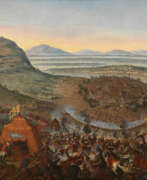

Frans Geffels, known in Italy as Francesco Geffels (25 August 1624 – 18 February 1694) was a Flemish painter, printmaker, architect, stage designer and designer of ephemeral structures for solemn and festive occasions. After training in his native Antwerp, he was mainly active in Mantua, where he was prefetto delle fabbriche to the Duke, a role that gave him the direction of the artistic and construction activities undertaken by the Ducal court. He worked also on projects for the local aristocratic class of Mantua. In addition, he completed projects for the Liechtenstein princes and for the imperial court in Vienna.
He was both a canvas and fresco painter. He created portraits, history subjects, military scenes, architectural scenes and genre art, in particular merry companies. Geffels is mainly remembered as the designer of some of the key examples of Baroque architecture in Mantua.
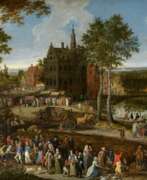

Peeter Gijsels was a Flemish painter of the Baroque period.
Peeter Gijsels is known for his landscapes, architectural compositions and still lifes. He is also considered a genre painter as he painted scenes of village markets and church kermis. His landscapes in the style of Jan Bruegel the Elder were in great demand during his time.
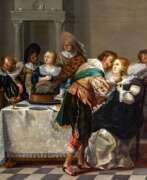

Dirck Hals was a Dutch Golden Age painter of merry company scenes, festivals and ballroom scenes. He played a role in the development of these types of genre painting. He was somewhat influenced by his elder brother Frans Hals, but painted few portraits.


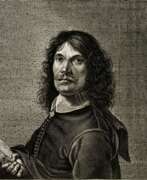

Nicolaus Knüpfer was a Dutch painter of the second third of the 17th century of German origin. He is known as a genre painter, a representative of the Dutch school of painting.
Inspired by Rembrandt, Knüpfer created small-scale paintings of biblical, literary, mythological, and historical themes, as well as depicting genre scenes and bacchanalia, including works with erotic overtones. The figures in his paintings were often depicted in unusual poses with flowing lines. His paintings can be seen today in galleries in Braunschweig, Kassel, Dresden, Copenhagen and the Hermitage Museum in St. Petersburg.
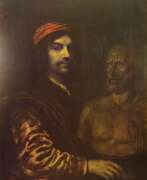

Philips Koninck was a Dutch landscape painter and younger brother of Jacob Koninck.
He painted chiefly broad, sunny landscapes, full of space, light and atmosphere; they are seen from a high perspective, allowing a prominent view of the sky. Portraits by him, somewhat in the manner of Rembrandt, also exist; there are examples of these in the galleries at Copenhagen and Oslo.
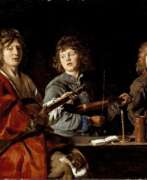

Antoine Le Nain is a French artist, one of the three Le Nain brothers.
He ran a workshop together. Together with Louis and Mathieu, Antoine worked on the decoration of the famous Chapel of the Virgin Mary in Saint-Germain-des-Prés. In 1648, he became one of the first members of the newly created Royal Academy of Painting and Sculpture.
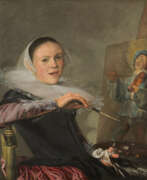

Judith Jans Leyster, a Dutch portrait painter of the Golden Age, was the first woman in the ranks of the Harlem Guild of St. Luke's. She painted still lifes, lively portraits, and genre scenes of taverns with drunks and people having fun. Several of her canvases depict women at home, which was a novelty for painting in the 1620s and 1630s.
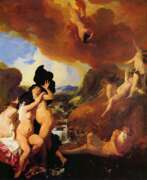

Johann Liss was a German painter of the first third of the 17th century. He is known as a painter, draughtsman and printmaker, who worked in Italy for much of his life, and as the son and namesake of Johann Liss, a painter at the court of the Dukes of Holstein.
Johann Liss worked primarily in the mythological genre. He is considered one of the key artists of the German Baroque and a prominent representative of the Venetian school. Early in his career, the artist traveled to the Netherlands, where he was influenced by a number of Dutch and Flemish masters. Italy inspired him to synthesize Dutch genre painting, Venetian style and Roman realism.
His paintings are in numerous European collections as well as in Russia and the United States.
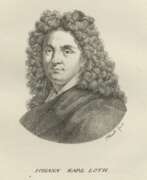

Johann Karl Loth was a German painter of the second half of the 17th century, the Baroque era. He is known as a painter and graphic artist, a representative of Caravaggism.
Loth painted canvases with historical, religious and mythological subjects, as well as portraits. In portrait painting, he brought elements of genre, which was influenced by the Flemish masters. The combination of dynamic brushstrokes, colorful variety and spectacular lighting in the style of the masters of Northern Italy attracted the attention of European collectors and aristocratic clients.
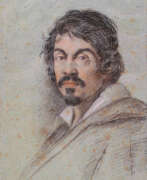

Michelangelo Merisi da Caravaggio, an Italian painter, was a pivotal figure in the transition to Baroque art. Born in Milan or the town of Caravaggio in 1571, his work is renowned for its realistic depiction of human emotion, dramatic use of lighting, and less-than-idealized portrayal of subjects, which broke away from the Mannerist style prevalent at the time.
Caravaggio's life was as dramatic as his art. In 1592, he moved to Rome, where, despite initial hardships, his unique style caught the eye of Cardinal Francesco del Monte, leading to his first public commissions. His success, however, was marred by a tumultuous life filled with brawls and legal troubles. Notably, in 1606, he fled Rome after killing Ranuccio Tommasoni in a brawl, an act that led to a death sentence. He sought refuge in Naples, Malta, and Sicily, continuing to create influential works while attempting to secure a papal pardon.
His most significant contributions to art include introducing a style that combined naturalistic detail with dramatic lighting (chiaroscuro) and psychological realism. This approach had a profound impact on the evolution of Baroque painting. Some of his notable works include "Basket of Fruit," "The Calling of St. Matthew," "The Beheading of St. John the Baptist," and "Supper at Emmaus." These works are characterized by their innovative composition and the intense emotional state they convey.
Caravaggio's fame waned after his death in 1610 under mysterious circumstances while traveling from Naples to Rome. However, the 20th century saw a resurgence in interest in his work, acknowledging his significant influence on Western art.
For collectors and art experts, Caravaggio's works represent a pivotal moment in the history of art, where the transition from Renaissance ideals to Baroque realism is profoundly evident. His paintings can be seen in various museums and galleries, offering a glimpse into the dramatic and emotive potential of art.
To stay updated on sales and auction events related to Caravaggio's works, signing up for updates can be a valuable resource for enthusiasts and collectors. This subscription will provide timely information on new opportunities to acquire pieces linked to this influential and groundbreaking artist.
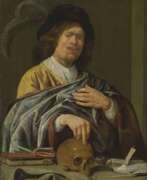

Jan Miense Molenaer was a Dutch painter of the Golden Age of Dutch painting, known for his genre scenes, in particular his depiction of everyday life in the Netherlands in the 17th century.
Jan Minse Molenaer was known for his humorous and lively scenes, often depicting peasants, drunks and musicians. He used a naturalistic style in his works, which were characterized by bright colours and a skilful use of light and shadow. During his career he also painted portraits and religious scenes.
Molenar was a member of the Haarlem Guild of St. Luke and his works were in great demand during his lifetime.
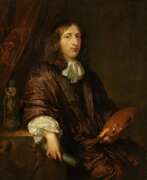

Caspar Netscher was a Dutch painter of the Golden Age of Dutch painting, known for his portraits. Netscher chose subjects from the life of the Dutch elegant and wealthy class; he painted many small portraits - mostly of women; some of them historical. After spending some time in Paris, he painted several persons belonging to the court of Louis XIV. In addition to the above-mentioned usual subjects, he depicted sometimes historical and biblical scenes.
Caspar Netscher's paintings were kept in many art galleries: in the Louvre, Amsterdam, Florence, in several private collections in England and in many other places. In the Hermitage at the beginning of the 20th century there were six of his paintings, including a portrait of the artist himself and a portrait of Mary Stuart, painted in 1683; today only two works have survived.
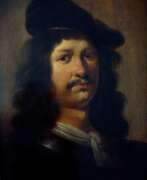

Jan Olis was a notable Dutch Golden Age painter, born in Gorinchem, Netherlands. His artistic journey began in 1632 when he joined the Dordrecht Guild of St. Luke, marking his official entry into the world of art. In addition to his painting career, Olis also dabbled in other professions; he was a wine seller and a teacher in the guild between 1632 and 1643. His life took an interesting turn when he moved to Heusden in 1651, where he held various council positions, eventually becoming the mayor in 1657 and a tax collector in 1670.
Olis' art primarily revolved around farm scenes, genre works, and merry companies, a style that resonated with the cultural and artistic norms of his time. His works are celebrated for their vivid portrayal of everyday life and social gatherings, which were typical subjects in the Dutch Golden Age of painting. Olis' paintings such as "Kitchen Interior" and "Elegant Company Playing Cards" showcase his talent in capturing the essence of social and domestic life with a keen eye for detail.
For collectors and experts in art and antiques, Jan Olis' works represent an important segment of Dutch Golden Age painting, a period renowned for its significant contribution to art history. His paintings not only reflect the cultural milieu of the 17th century Netherlands but also offer a window into the social customs and lifestyles of the time.
If you're intrigued by the works of Jan Olis and wish to stay updated on new product sales and auction events related to his art, signing up for updates is an excellent way to remain informed. This subscription service focuses solely on bringing the latest news about sales and auctions of Olis' works directly to you, without any extraneous information.
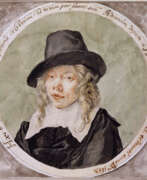

Isaac van Ostade was a Dutch painter. He was the brother and pupil of Adriaen van Ostade, who influenced his first works. Despite his short lifespan, he left around 100 paintings which deal with motifs similar to those of his brother, with whom they are often confused. They depict battles and rural scenes. After 1640 his pictures show rural life on the streets and inn scenes. The figures now increasingly take center stage in his paintings.
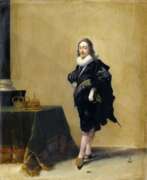

Hendrik Gerritsz. Pot, nicknamed Pot from the East Indies, was a Dutch painter-painter, miniaturist, and decorator. He was a member of the Guild of St. Luke of Haarlem. Poth's famous works include genre paintings, portraits, and still lifes in the vanitas style. Sweat has genre scenes depicting groups of young people leading merry lives, drinking, eating and flirting, but he also painted a series of portraits of the English royal family.
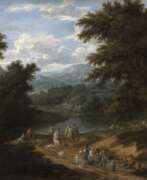

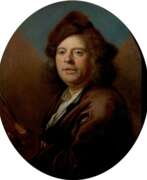

Jan Siberechts was a Flemish landscape painter whose career spanned both his native land and England. Initially, Siberechts developed a personal style of landscape painting in Antwerp, emphasizing Flemish countryside and country life. His work was influenced by Dutch Italianate landscape painters such as Nicolaes Berchem and Karel Dujardin, reflecting a blend of local and Italianate elements. This phase of his career was marked by vivid depictions of the Flemish rural life, with robust country girls in bright attire becoming a signature motif of his paintings.
Siberechts moved to England around 1672, where he significantly contributed to the English landscape tradition. In England, he painted decorations for the Duke's Cliveden House and later, traveled extensively, completing commissions for aristocratic clients. His English landscapes maintained their Flemish character but also started to focus more on universal themes, with less emphasis on figures and more on the scenery itself. These works are characterized by powerful trees, soft light on distant hills, and a relatively dark foreground to highlight the illuminated vistas in the background.
Siberechts is credited as the 'father of British landscape' for his pioneering country house portraits, blending detailed naturalistic views of stately homes into atmospheric landscapes. This innovative approach had a lasting influence on English landscape painting. His work, such as the views of Longleat and the Belsize Estate, represents an important step in the development of topographical painting, merging Flemish influences with the emerging English landscape tradition.
For collectors and experts in art and antiques, Siberechts' oeuvre offers a unique window into the transnational flow of artistic ideas in the 17th century, blending Flemish traditions with the nascent English landscape genre. His paintings, celebrated for their detail and historical topographical interest, can be found in prestigious collections such as the Tate Gallery London and the Victoria and Albert Museum.
For updates on exhibitions, sales, and auction events related to Jan Siberechts' work, art enthusiasts are encouraged to sign up for dedicated newsletters. This ensures that they remain informed about the latest opportunities to explore and appreciate the contributions of this influential Flemish artist to the landscape painting genre.
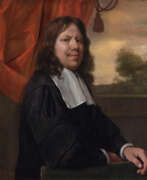

Jan Havickszoon Steen was a Dutch painter of the Golden Age, a member of the Harlem and Leiden Guilds of St. Luke. Steen is one of the most important Dutch genre painters of his time. Most of his several hundred paintings focus on human morality with the aim of teaching the viewer a moral lesson. They often refer to proverbs or old Dutch literary texts. In addition to genre paintings, Sten explored a variety of subjects: he painted historical, mythological and religious scenes, still lifes and landscapes.
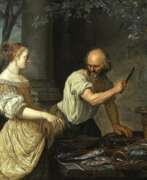

Jacob Toorenvliet was a Dutch painter and graphic artist of the Gilded Age, a master of genre painting and printmaking.
Jacob Toorenvliet was a member of the Leiden Guild of Saint Luke. Together with Willem van Mieris and Carel de Moor he founded the Academy of Arts (Tekenacademie).
Jacob Torenvliet's style of painting has its origins in the genre painting of Leiden. Torenvliet's paintings contain elements of fine painting. The artist incorporates all kinds of influences in his work, but mixes them with his own forms of expression.
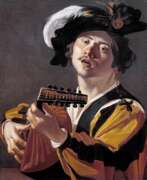

Dirk Jaspersz. van Baburen or Wijk bij Duurstede was a Dutch Golden Age painter, member of the Guild of Saint Luke of Utrecht. He is one of the leading representatives and creators of the Utrecht School of Caravaggio. Dirk van Baburen painted mainly on biblical and mythological subjects, as well as genre scenes with drunks and musicians.
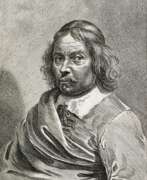

Jan Hermansz. van Bijlert, or Jan van Bijlert, or Giovanni Bilardo, is a Dutch painter of the Dutch Golden Age, considered one of the Caravaggio school in Utrecht. He spent about four years in Italy and was one of the founders of the Bentvueghels circle of northern artists in Rome, where he was nicknamed Aeneas. Van Beilert was one of the most famous artists of the city of Utrecht. He mainly painted religious and mythological scenes, genre scenes of public places and musical parties, but he was also a portraitist.
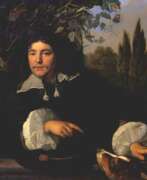

Bartholomeus van der Helst was a Dutch painter. Considered to be one of the leading portrait painters of the Dutch Golden Age, his elegant portraits gained him the patronage of Amsterdam's elite as well as the Stadtholder's circle. Besides portraits, van der Helst painted a few genre pictures as well as some biblical scenes and mythological subjects.
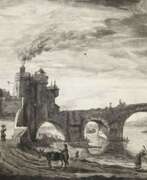

Jacob van der Heyden was a Flemish Baroque painter, sculptor and engraver. According to Houbraken he was a painter from Strasbourg who painted for royalty. According to the RKD he worked in Strasbourg, Frankfurt, and Sweden. and was known for portraits, landscapes and historical allegories. Most of his work that survives today are engravings. He died in Brussels.
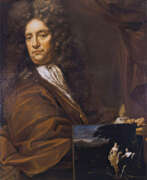

Eglon Hendrick van der Neer was a Dutch painter of the Dutch Golden Age, son of the painter Art van der Neer.
Eglon van der Neer was a master of historical scenes, portraits of nobles and scenes from their lives. He also painted landscapes and genre scenes.
In Brussels he was a painter at the court of King Charles II.


Egbert van Heemskerck, or Egbert Jaspersz van Heemskerk was a Haarlem Dutch Golden Age painter of genre works who died in London in 1704. He is often confused with another genre painter also called Egbert van Heemskerk III who lived c. 1676 – 1744.


Willem van Herp was a Flemish Baroque painter specializing in religious paintings and small cabinet paintings of "low-life" genre scenes. He operated a large workshop and through his good connections with Antwerp art dealers helped spread the Flemish Baroque style internationally.


Gerard van Honthorst (Dutch: Gerrit van Honthorst) was a Dutch Golden Age painter who became known for his depiction of artificially lit scenes, eventually receiving the nickname Gherardo delle Notti ("Gerard of the Nights"). Early in his career he visited Rome, where he had great success painting in a style influenced by Caravaggio. Following his return to the Netherlands he became a leading portrait painter.
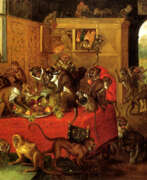

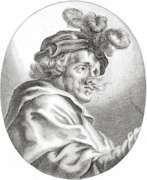

Pieter van Laer was a Dutch painter of the Golden Age, a talented genre painter and printmaker. Pieter van Laer introduced a new genre of painting, bambocciade (after his nickname of bamboccio, little boy). These are paintings depicting scenes from everyday life of ordinary people. In his works, Pieter van Lahr depicted with humor, and sometimes with grotesque and sarcasm, the everyday life of the lower classes of society. Pieter van Lahr is also known for his landscapes and animal representations - he created two series of engravings with animals. He also painted several battle scenes.


